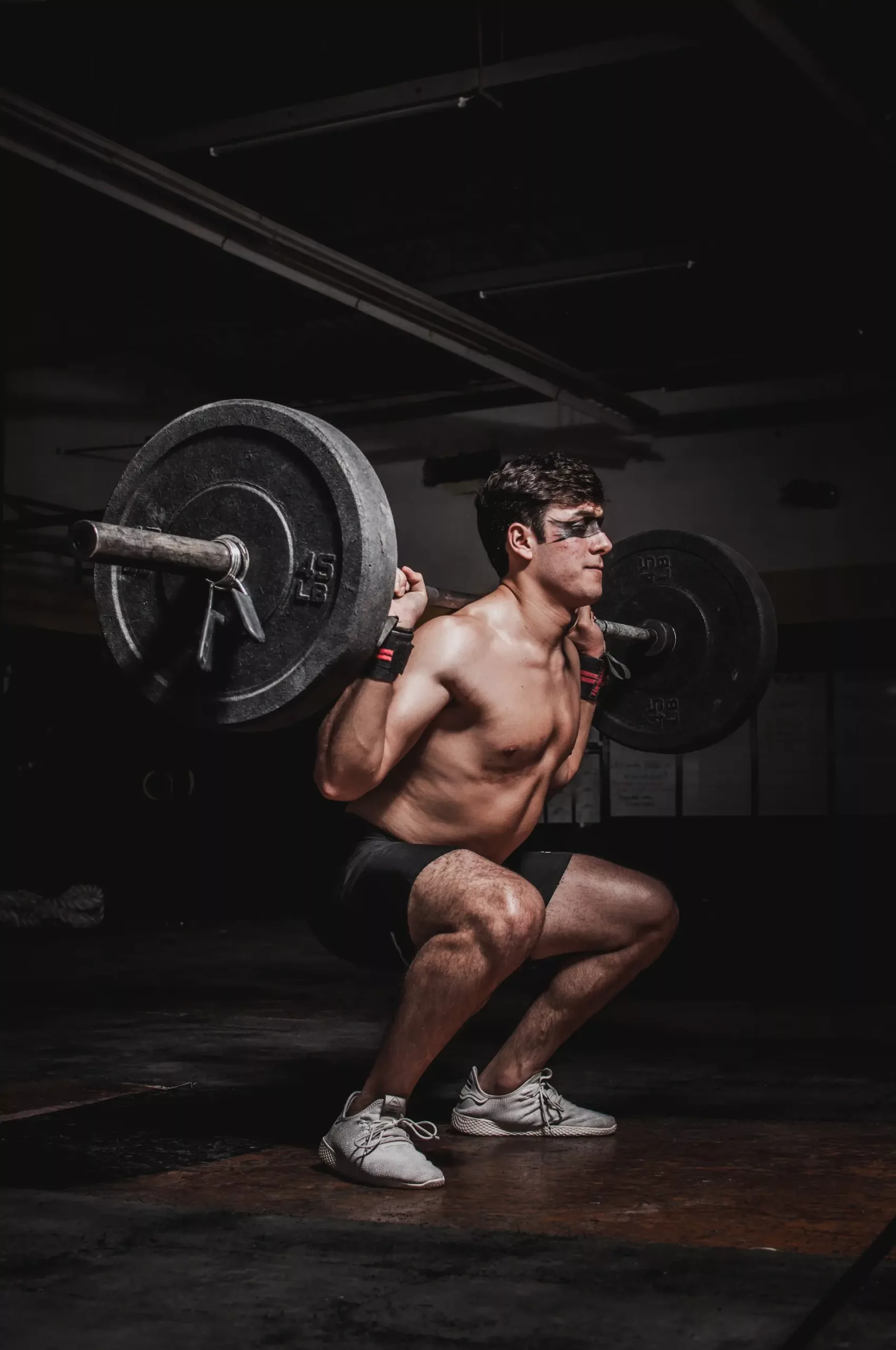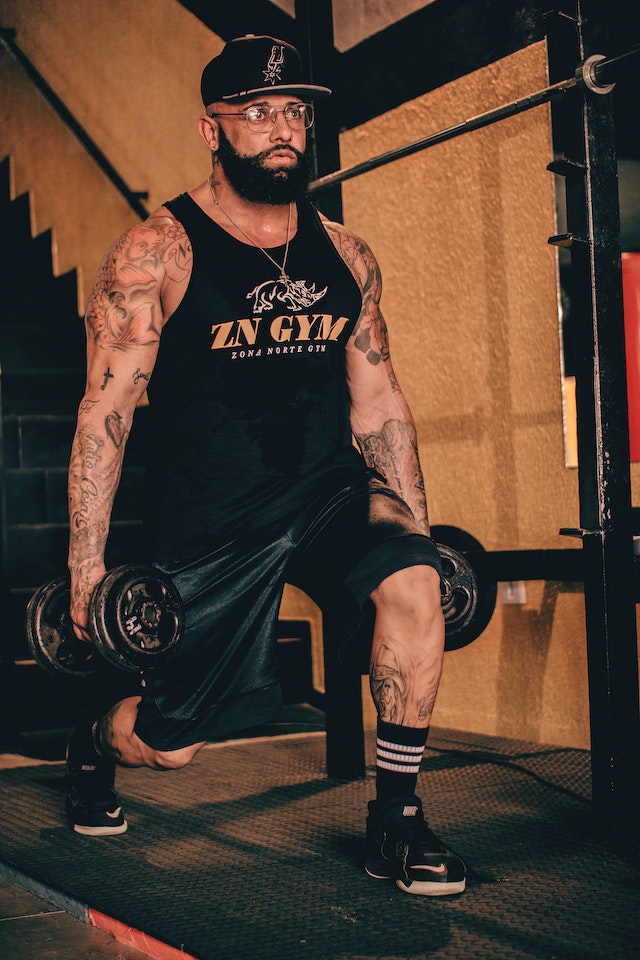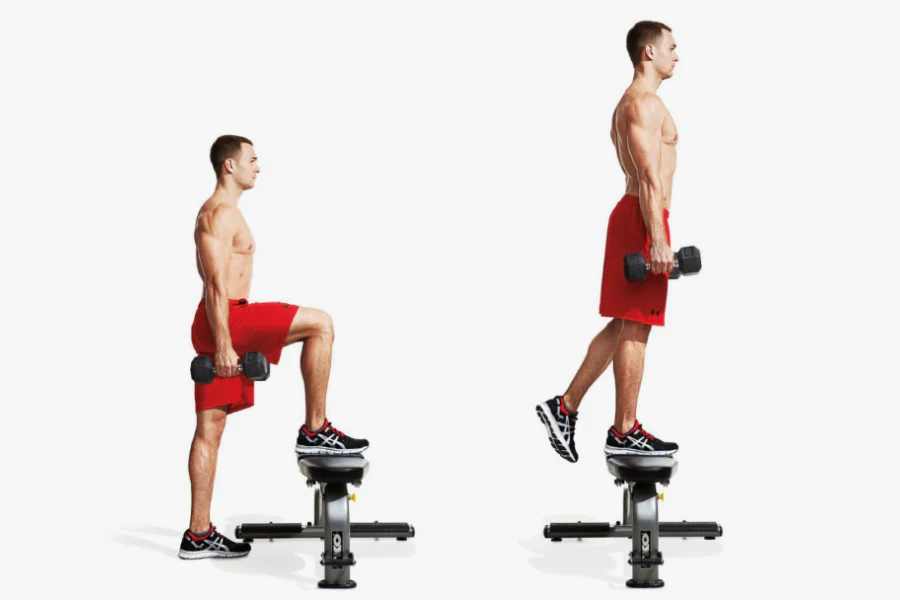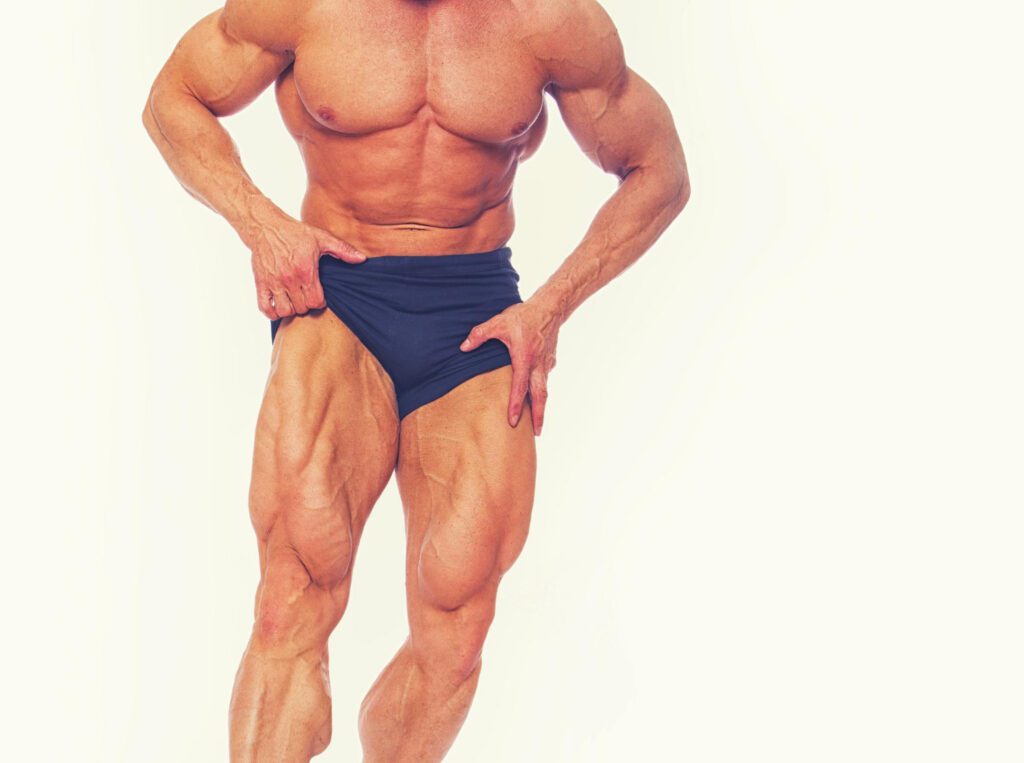Calisthenics, an exercise approach harnessing the power of bodyweight movements, catalyzes to boost strength, endurance, and flexibility. The purpose of this article is to unfold the benefits of calisthenics and to sculpt a complete calisthenics leg workout.
1. Brief Explanation of Calisthenics and its Benefits:
Calisthenics, a genre of physical training, capitalizes on leveraging one’s body mass as a source of resistance, obviating the necessity for external apparatus.
This form of exercise bestows upon practitioners an array of advantages, including amplified muscular robustness, heightened suppleness, and augmented mastery over bodily coordination.
By depending on the body’s intrinsic weight, calisthenics facilitates the development of functional potency, which seamlessly permeates into routine activities.
2. Importance of Adding Leg Exercises in Your Workout Routine:
Legs, constituting a pivotal component of the human anatomy, play a cardinal role in fostering mobility, stability, and overall physical prowess. Disregarding the inclusion of leg exercises may result in muscular imbalances, thereby hindering progress in other facets of physical fitness.
By incorporating leg exercises into your fitness routine, you ensure a well-rounded approach to fortifying your physique and pave the way for harmonious muscular development.
Calisthenics leg workouts prove to be particularly advantageous as they concurrently engage multiple muscle groups, encompassing the quadriceps, hamstrings, glutes, and calves.
Through targeted activation of these major muscle clusters, one can heighten the overall caloric expenditure and invigorate the metabolism, thus facilitating the pursuit of weight management objectives.
3. Why Calisthenics for Legs?
A. Advantages of Calisthenics Exercises for Leg Development:
Calisthenics exercises offer a distinctive array of merits in augmenting leg development. By relying on the body’s intrinsic weight, these exercises foster functional strength, emulating real-life movements.
This symbiosis translates into enhanced equilibrium, coordination, and steadiness, thereby amplifying performance in various athletic and recreational activities.
B. Benefits of Bodyweight Training for Overall Fitness:
Calisthenics, an approach of bodyweight training, presents a comprehensive avenue to achieve overall fitness. It enhances cardiovascular endurance, fortifies muscular stamina, and increases lean muscle mass, all without necessitating expensive equipment or gym memberships.
Bodyweight training emerges as an accessible pursuit for individuals across all fitness spectrums and can be conveniently tailored to align with specific goals and aptitudes.
By including calisthenics leg exercises into your workout regimen, you will get plenty of benefits including increased leg strength and aesthetics.
Whether your aspirations gravitate toward strength amplification, enhanced athletic prowess, or the attainment of a sculpted lower body, calisthenics leg workouts proffer an adaptable and efficacious pathway to materialize your fitness aspirations.
4. Warm-Up Routine:
A. Importance of Warming Up Before a Workout:
A proper warm-up is essential before engaging in any physical activity, including a callisthenics leg workout. It helps increase blood flow to the muscles, raises body temperature, and prepares your body for upcoming exercises. Warming up reduces the risk of injury and enhances overall performance.
B. Dynamic Stretches and Mobility Exercises for the Lower Body:
Incorporate dynamic stretches and mobility exercises to specifically target the lower body. Dynamic stretches such as leg swings, walking lunges, and high knees help increase the range of motion and loosen up the muscles. Mobility exercises like hip circles and ankle rotations improve joint flexibility and mobility.
5. Main Leg Exercises:
A. Squats:

Proper Form and Variations (e.g., pistol squats, jump squats): Mastering proper squat form is crucial to maximize results and prevent injuries. Explore variations like pistol squats (single-leg squats) and jump squats to add intensity and challenge your leg muscles in different ways. Adding these exercises to your calisthenic leg workout is very beneficial.
Muscles Targeted and Benefits: Squats primarily target the quadriceps, hamstrings, and glutes. They also engage the core and lower back muscles. Benefits include improved lower body strength, increased muscle tone, enhanced stability, and functional movement patterns.
Sets, Reps, and Progression Tips: Start with bodyweight squats and gradually increase the intensity by adding resistance, such as using dumbbells or resistance bands. Aim for 3-4 sets of 8-12 reps, focusing on maintaining proper form throughout. As you progress, you can increase the resistance or explore advanced variations.
B. Lunges:

Different Lunge Variations (e.g., forward lunges, reverse lunges): Explore various lunge variations to target different muscle groups and challenge your balance and stability. Examples include forward lunges, reverse lunges, walking lunges, and side lunges.
Technique Tips and Modifications: Maintain an upright posture, engage the core, and step forwardbackwardsward with control. Modify the depth and range of motion based on your comfort and fitness level. Consider using support, such as a chair or wall, for assistance if needed.
Muscles Worked and Functional Benefits: Lunges primarily target the quadriceps, hamstrings, glutes, and calves. They also engage the core and improve hip flexibility. Functional benefits include increased leg strength, improved balance, and enhanced coordination during daily activities.
C. Step-ups:

Step-up Variations and Equipment Options:
Step-ups can be performed on a sturdy bench, platform, or step. Adjust the height based on your fitness level and available equipment. Progress by using higher steps or adding weights for added resistance.
How to Perform Step-ups Correctly:
Step onto the platform with one foot, drive through the heel and extend the leg to a full standing position. Step down and alternate legs. Maintain a controlled and steady pace throughout the exercise.
Targeted Muscle Groups and Advantages:
Step-ups target the quadriceps, hamstrings, glutes, and calves. They also engage the hip flexors and improve lower body stability. Step-ups are functional exercises that enhance everyday movements like climbing stairs or stepping onto curbs.
D. Calf Raises:
Calf Raise Techniques (e.g., standing, seated, single-leg):
Perform calf raises in standing or seated positions. You can also try single-leg variations to further challenge your calf muscles. Adjust the range of motion to suit your comfort and flexibility.
Benefits for Calf Strength and Aesthetics:
Calf raises primarily target the calf muscles (gastrocnemius and soleus). Regular training can strengthen the calves, improve ankle stability, and contribute to overall lower body aesthetics.
Recommended Sets, Reps, and Progression Strategies:
Begin with bodyweight calf raises and gradually increase the intensity by adding weights or using calf raise machines if available. Aim for 3-4 sets of 12-15 reps. Progress by increasing the resistance or trying different variations.
People Also Read
Is Calisthenics Good for Boxing? Exploring the Benefits and Effectiveness
V. Advanced Leg Exercises:
A. Plyometric Exercises:
Explaining the Concept of Plyometrics and Its Benefits:
Plyometrics, also known as jump training, involves explosive movements that utilize the stretch-shortening cycle of muscles.
This type of training enhances power, speed, and overall athletic performance. In a calisthenics leg workout, incorporating plyometric exercises can help boost leg strength and explosiveness.
Examples of Explosive Leg Exercises (e.g., box jumps, burpees):
Some examples of plyometric exercises for the lower body include box jumps, squat jumps, tuck jumps, and burpees. These exercises require rapid muscle contractions and generate a significant amount of force, resulting in improved power and explosiveness in the legs.
Safety Precautions and Beginner Progressions:
When performing plyometric exercises, it’s crucial to prioritize safety and proper form to prevent injuries. Start with beginner variations and gradually progress as your strength and coordination improve.
Focus on landing softly, maintaining good posture, and using appropriate surfaces with ample cushioning. Listen to your body and consult a fitness professional if you have any concerns.
B. Pistol Squats:
Step-by-Step Guide for Performing Pistol Squats:
Pistol squats are a challenging unilateral exercise that targets the quadriceps, hamstrings, and glutes. They are an important pillar in sculpting leg calisthenics workout. Here’s a step-by-step guide to performing pistol squats:
a. Begin by standing on one leg with the other leg extended straight in front of you.
b. Slowly lower yourself into a squat position while keeping the extended leg off the ground.
c. Aim to lower yourself as low as possible, maintaining balance and control. d. Push through the heel of your standing leg to rise back up to the starting position. e. Repeat on the other leg.
Muscles Worked and Functional Benefits:
Pistol squats primarily target the quadriceps, hamstrings, glutes, and core muscles. They promote unilateral leg strength, balance, and stability. Additionally, pistol squats have functional benefits as they mimic movements required in activities like running, jumping, and climbing.
Modifications for Beginners and Common Mistakes to Avoid:
For beginners, it’s common to struggle with pistol squats due to balance and strength limitations. Consider using a support, such as a TRX suspension trainer or holding onto a stable surface, for assistance.
As you progress, gradually reduce the amount of assistance until you can perform pistol squats unassisted. Avoid common mistakes like leaning too far forward or allowing the knee to cave inward.
6. Sample Calisthenics Leg Workout Routine:
A. Preparing a Sample Workout Plan Incorporating the Discussed Exercises:
To create an effective calisthenics leg workout routine, we can combine the exercises discussed earlier. Here’s a sample workout plan:
Exercise Order:
Begin with the core leg exercises (squats, lunges, step-ups, and calf raises) to target major muscle groups and build foundational strength. Follow this with advanced leg exercises (plyometrics and pistol squats) to challenge your muscles further.
Reps and Sets:
Aim for moderate to high repetitions, typically ranging from 8-15 reps per set, to promote muscular endurance and hypertrophy. Perform 3-4 sets for each exercise to provide sufficient volume for muscle stimulation.
Rest Intervals:
Allow 60-90 seconds of rest between sets to promote recovery and maintain intensity throughout the workout. Adjust rest periods based on your fitness level and the intensity of the exercises.
Progressive Overload:
Continuously challenge your muscles by gradually increasing the difficulty of the exercises. This can be achieved by adding resistance, increasing repetitions, or exploring more advanced variations.
VIII. Conclusion:
Incorporating a well-structured calisthenics leg workout routine can help you build strength, power, and muscular endurance in your lower body. By combining core leg exercises and advanced movements like plyometrics and pistol squats, you can achieve balanced leg development and enhance your athletic performance.
Remember to listen to your body, maintain proper form, and gradually progress as your fitness level improves. Consistency and dedication to your calisthenics leg workout routine will yield long-term benefits for your overall fitness and leg strength. Enjoy your calisthenic leg workout.
Hello, fellow fitness enthusiasts! I'm Zayn, a Board Certified Fitness and Nutrition Coach. My journey started from a personal commitment to fitness, and over time, this passion ignited a desire to help others unlock their potential. I transformed this passion into my profession, and today, I'm proud to say that I am armed with a plethora of certifications, all testament to my dedication and commitment.
When I'm not advising clients or working on my next blog post, you'll find me trying out new fitness regimes, diving into the latest nutritional research, or practicing what I preach with my own healthy lifestyle. My mission is to help you become the best version of yourself, showing that fitness and nutrition are as much about the journey as they are about the destination.


